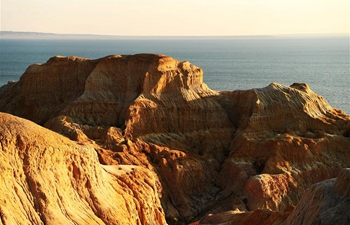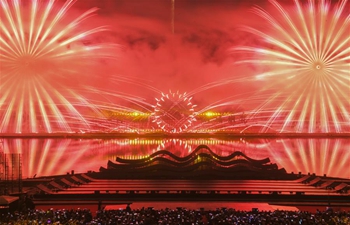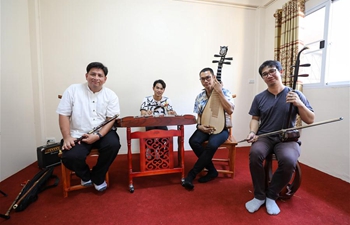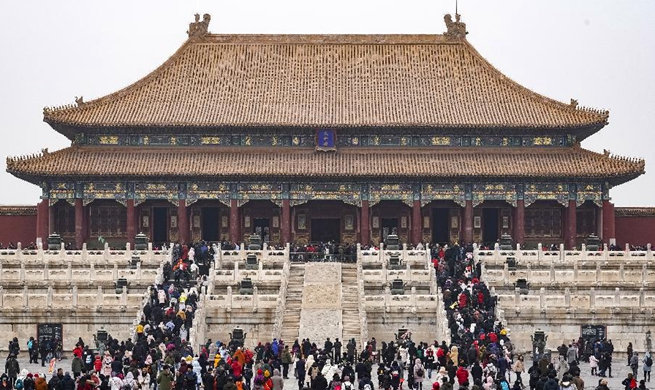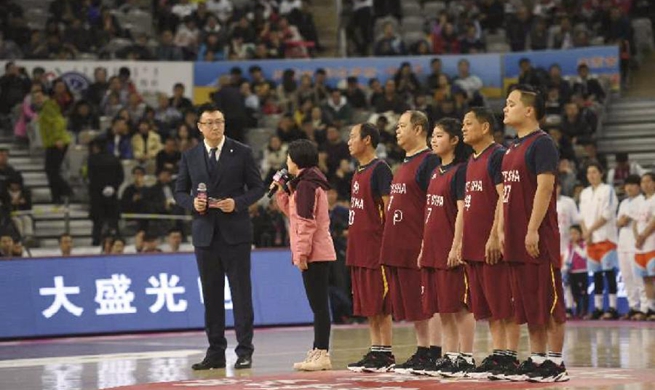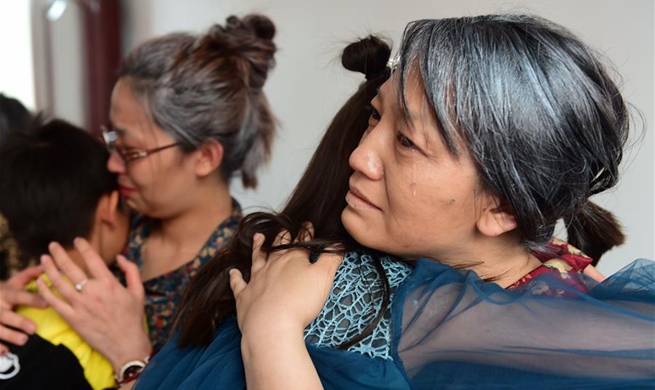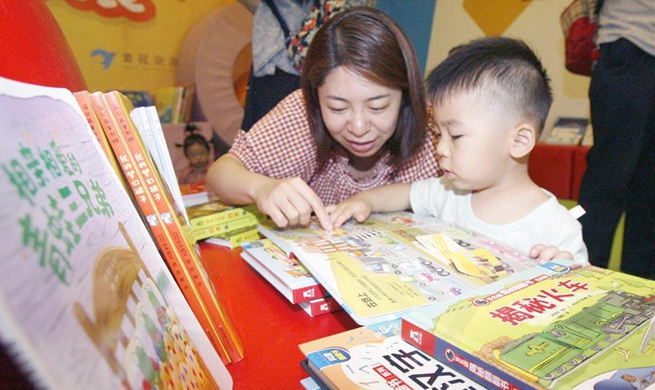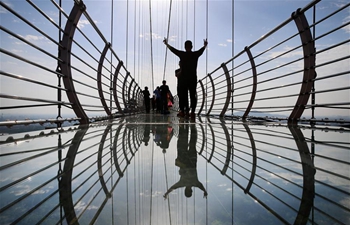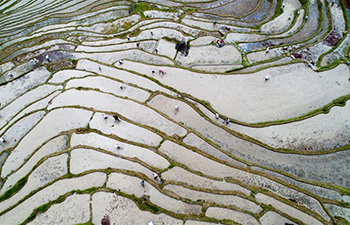HAVANA, May 11 (Xinhua) -- Alfredo Chong, a 70-year-old Cuban artist, has been showing Chinese culture through his paintings and papier-mache sculptures for twenty years.
"I am the son of a Chinese man and a Cuban woman, and although I feel like just any other Cuban, I cannot hide the cultural legacy of my father," the painter told Xinhua in an interview at his cozy, self-designed home in a quiet Havana neighborhood.
His sculpture "Distant Homesickness" was on view at the ongoing 13th Havana Biennial Art Exhibition, which concludes on Sunday.
The art piece, showcasing an anonymous immigrant sitting on the sidewalk in Havana's Chinatown, is one of the many examples that demonstrates the strong influence of Chinese culture on his life.
His father, Chong Yiman, a native of south China's Guangdong Province, came to Cuba in 1921 when he was 19 years old. The young man was then attracted by stories from his uncle who had settled in the city of Holguin, some 700 km east of Havana.
Like many other immigrants, Chong Yiman's life was hard. He worked in the Cuban capital as a barber, learning Spanish as quickly as he could. He moved to Holguin before settling down in Camaguey in central Cuba, where he came to own a "bodega," a traditional grocery store.
After a fire destroyed his burgeoning enterprise, Chong Yiman had to start from scratch, eventually building a modest restaurant where he worked together with his Cuban wife and five children.
Alfredo Chong grew up in this atmosphere of hard work and dedication. He went on to study biology and entomology at the University of Havana, where he met his wife, Magaly Diaz, also a biologist and now a retired professor, with whom he shares two children.
"My father influenced me a lot, but especially from a philosophical perspective. And he instilled in me a great love of nature, of all living things, giving a lot of value to things even when they are small," the artist said.
Chong said he arrived late to painting, beginning at 50 year old. He was looking to express his rich inner world, in which feng shui, an ancient Chinese philosophy with roots in Taoism, has an important role in the conscious and harmonious organization of space.
Being late to the world of art has made him a creator who is constantly experimenting with techniques, colors, and textures.
"A large part of my paintings are done in black and white, because I'm very interested in achieving textures and portraying things not exactly as they are, but creating a fantasy in the eye of the viewer," he said.
Chong also tends to paint in a vertical format with a distribution of figures that is reminiscent of Chinese paintings, leaving a free space for visual freedom, "so that the picture may breathe."
The strong Chinese influence on Chong's art doesn't stop there. His fascinating papier-mache sculptures are almost all dedicated to figures tied to Havana's Chinatown, "as a humble tribute to so many Chinese immigrants who came to Cuba one way or another."
This tribute, together with the cultural legacy left by his father, was the basis for his exhibition last year, "The Son of the Immigrant."
Another one of his works honoring Chinese immigrants is "The Carrier of Culture," a piece that features one of the Chinese vegetable sellers that were once ubiquitous on the streets of Havana.
Perhaps because of his immigrant descent, borders are an artistic obsession for Chong, who is determined to encourage discourse in breaking down barriers that restrict the free movement of people.
